Sarah Sullivan's Blog, page 2
November 19, 2014
WILLIAMSBURG REGIONAL LIBRARY-SOMETHING TO BE VERY GRATEFUL FOR!
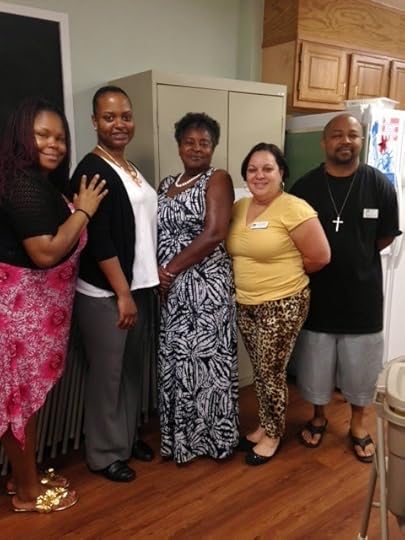
I want to say a belated THANK YOU to ELETHA DAVIS, Mobile Library Services-Youth, of the WILLIAMSBURG REGIONAL LIBRARY, as well as her staff and the staff at the Community Center at LAFAYETTE SQUARE for arranging my visit in August. This was my first experience as a visiting author in my new hometown and I had a wonderful time. Tova Johnson of the WRL wrote a wonderful Reader’s Theater script – THANK YOU, TOVA! She and Chris helped the kids prepare for their performance. They chose the scene with the ghost in the attic near the end of All that’s Missing. Chris provided the sound effects. The kids played each of the roles and they were terrific. Afterwards, we talked about books and reading. They told me about their favorite books and asked me about mine. It is a privilege to live in a town with such an outstanding library. As we approach next week’s holiday and count our blessings, I am incredibly grateful for the WILLIAMSBURG REGIONAL LIBRARY and its OUTSTANDING STAFF!
Published on November 19, 2014 15:04
October 23, 2014
GHOST STORIES
 What is it about a spooky house that sets your imagination on fire? I love taking photographs of abandoned old houses. They spark my curiosity. They feel loaded with meaning. It’s so much fun to make up strange stories about what might have happened inside.
What is it about a spooky house that sets your imagination on fire? I love taking photographs of abandoned old houses. They spark my curiosity. They feel loaded with meaning. It’s so much fun to make up strange stories about what might have happened inside. In All That’s Missing, Maywood dares Arlo to explore a haunted house on Cemetery Hill. Not one to back down in the face of a challenge, he agrees. To his surprise, Maywood’s confidence wanes once they are standing in front of the forbidding structure. What will Arlo do?
This scene was great fun to write. I drew on memories of old abandoned houses I have noticed over the years. Here’s an excerpt from pp. 221-222, just in time for Halloween.
Under the canopy of pine, the air was cool. Arlo slowed his pace, waiting for his eyes to adjust to the darkness. They dodged tree stumps and lumpy hillocks until they were on the other side of the woods, in a clearing where a gloomy house stared down at them.Leered, actually. As if it were daring them to step inside. Maywood lifted her chin. “It’s just an old falling-down house,” she said. “It can’t hurt us.”
“Right,” Arlo said.
The house was made of weathered gray boards, some of which had rotted away, leaving gaping holes in the walls. None of the windows had glass in them. And the front door was missing.
When a crow squawked again from the top of a giant hemlock, Arlo whipped around. “It’s following us,” Maywood whispered.
“No,” Arlo said. “It was here before we got here.”
“How do you know?” Arlo nodded. “I saw it in the hemlock.” “But, that’s worse.” Maywood shivered. “That means it knew we were coming here. Maybe it understands what we’re saying.”
The wind stirred up dust from the bare dirt around the foundation. Arlo’s nose twitched. He peered through the open doorway. “We can’t go in.” Maywood squared her shoulders. “The whole thing could collapse any second.”
“You mean we came all the way up here just to stand outside and look?”
Arlo tapped on the bottom step. It felt solid enough. Though Maywood put a hand out to stop him, Arlo couldn’t ignore the irresistible pull to go inside.”
I won’t tell you what happens, but this scene in the cemetery is a prelude to a later scene in Arlo’s grandmother’s house. And yes, it involves a ghost. I like to use this scene when I lead writing workshops with students in fourth, fifth and sixth grades, asking them to identify places where I used the five senses. It helps them think about using sight, touch, hearing, smell and taste in their own stories. It’s a tangible way of encouraging them to “show, not tell.”
Since ghost stories are a favorite with middle grade readers, it’s also a good launching point for writing stories of their own. I loved to make up ghost stories when I was in fourth, fifth, sixth and seventh grades. Truth be told, it’s still fun. In fact, I’m working on another one now. . .
Published on October 23, 2014 09:46
October 8, 2014
DIALOGUE: A BALANCING ACT
Today’s post is the first in what I plan to be periodic postings on elements of writing craft. There are so many things to think about when you sit down to write a story. For today, let’s focus on TALK. DIALOGUE – A BALANCING ACT
 There are not many things a person can count on when it comes to living a writing life. (At least, some measure of rejection comes to mind, but let's focus on the positive!) One hallmark of strong writing is sharp, clean dialogue. Nothing conveys a sense of character more effectively than good dialogue. I don't think you can study the mechanics and fine points of it too much. Some writers are masters at comic pacing. Elmore Leonard, Elinor Lipman and Betsy Byars come to mind. Others are admired for their ability to pare down the words until the white spaces ooze with meaning. (Hemingway's Hills Like White Elephants is the example we usually think of in this context). Pull out your writing how-to books and you will read that dialogue serves two purposes: 1. To reveal character and 2. To advance plot. I am not one for absolute rules, so I acknowledge that dialogue may serve other subtle purposes as well. Be that as it may, your dialogue had better reveal character and advance plot or it is not carrying its weight.
There are not many things a person can count on when it comes to living a writing life. (At least, some measure of rejection comes to mind, but let's focus on the positive!) One hallmark of strong writing is sharp, clean dialogue. Nothing conveys a sense of character more effectively than good dialogue. I don't think you can study the mechanics and fine points of it too much. Some writers are masters at comic pacing. Elmore Leonard, Elinor Lipman and Betsy Byars come to mind. Others are admired for their ability to pare down the words until the white spaces ooze with meaning. (Hemingway's Hills Like White Elephants is the example we usually think of in this context). Pull out your writing how-to books and you will read that dialogue serves two purposes: 1. To reveal character and 2. To advance plot. I am not one for absolute rules, so I acknowledge that dialogue may serve other subtle purposes as well. Be that as it may, your dialogue had better reveal character and advance plot or it is not carrying its weight.
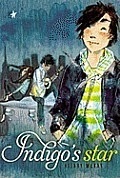 Here's a bit of dialogue from one of Hilary McKay's books about the Casson family. If you're not familiar with these books, I highly recommend them. There are five books in the series, beginning with Saffy's Angel and ending with Forever Rose. They are about an "eccentric and muddled artistic family" of four children, (three girls and a boy). The children call their parents Eve and Bill. Eve and the children live outside the city, while Bill lives in a studio apartment in London. In the first chapter of the second book in the series, Indigo's Star, McKay provides readers with a reminder of the back-story. Rather than slow down the narrative with a tedious recital of events already disclosed in the first book, McKay enlivens this section with dialogue, using it to entertain as well as to remind readers of the Casson family and their unique circumstances. She reveals character and, in a sense, advances plot, setting the stage for what happens next.
Here's a bit of dialogue from one of Hilary McKay's books about the Casson family. If you're not familiar with these books, I highly recommend them. There are five books in the series, beginning with Saffy's Angel and ending with Forever Rose. They are about an "eccentric and muddled artistic family" of four children, (three girls and a boy). The children call their parents Eve and Bill. Eve and the children live outside the city, while Bill lives in a studio apartment in London. In the first chapter of the second book in the series, Indigo's Star, McKay provides readers with a reminder of the back-story. Rather than slow down the narrative with a tedious recital of events already disclosed in the first book, McKay enlivens this section with dialogue, using it to entertain as well as to remind readers of the Casson family and their unique circumstances. She reveals character and, in a sense, advances plot, setting the stage for what happens next.Rose and Indigo were the two youngest of the Casson family. Saffron was fourteen, and Caddy, the eldest, was nineteen. Caddy was home for the weekend, partly for Indigo's sake, because of going back to school, and partly in honor of Rose's new glasses. Caddy often came home, but the children's father did not. He preferred his studio in London, where he lived the life of a respectable artist, unburdened by family. "He comes home on weekends," said Rose's mother. "He doesn't," said Rose. "Nearly every weekend, when he can fit it in." "Only once since Christmas." "Well, Daddy has to work very hard, Rose darling." "So do you." "Daddy is a proper artist," said Eve, which was how she had always explained the difference between herself and Bill to the children. "A proper artist. He needs peace and quiet. . . . Anyway..." "Anyway what?" Eve gave Rose a painty hug and said she had forgotten what she was trying to say.
In 94 words of dialogue, McKay has given readers a lot of information about Eve and Rose and the children's father. Notice how clean this text is. There are only two dialogue tags, exactly enough to identify the speakers. Nothing more. After that, the conversation flows without interruption. And look how much you learn about Rose and her mother and father. 1. Rose thinks her father should spend more time at home. 2. Eve thinks of her husband as a "Real" artist, while she sees herself as something less. 3. Rose knows her mother doesn't take herself as seriously as an artist as her father does. And McKay conveyed all this with 94 words! She didn't explain what her characters were thinking. She let readers figure that out for themselves. She used repetition brilliantly to show Eve's state of mind. "Daddy is a proper artist," Eve tells her daughter, and then again later, in the same bit of speech, she says again, "A proper artist," and readers feel the weight of that judgment. Readers feel that Eve is struggling with this. What is a proper artist? Is Eve herself not a proper artist? Is her life more mundane and tedious because she is something different from her husband? All of those thoughts (and doubts) are in there. What can you take away from this example? 1. Use dialogue tags (he said, she said) sparingly. 2. Avoid direct address, particularly when your dialogue involves only two characters. Notice that McKay only has one instance of direct address in this passage. Eve says, "Well, Daddy has to work very hard, Rose darling." McKay has Eve address Rose by name for a purpose. It reveals Eve's character and her emotional state. Eve is working hard to justify her husband's absence, both to herself and to her daughter. Readers feel compassion for her because they can see this in the dialogue. Dialogue tags, without purpose, are clunky. They detract from the scene. Look what happens if you add dialogue tags and/or direct address willy nilly, without intention or purpose to this same scene. "He comes home on weekends, Rose" said Rose's mother. "He doesn't," said Rose. "Nearly every weekend when he can fit it in," said Rose's mother. "Only once since Christmas, Mum," said Rose. All this does is add verbiage. We lose some of the zip and flair. We are slowed down by unnecessary words.
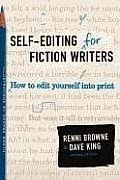 Renni Browne and Dave King's book, Self-Editing for Fiction Writers, contains an excellent discussion on dialogue. Read the two chapters in that book and then analyze particular passages of dialogue in books that you admire. Be daring when you edit your own dialogue. Remember to leave spaces for the reader to add their own understanding of a particular scene. This is another way of saying, don’t explain too much. Respect your reader’s intelligence. Part of the joy of reading is engaging in the process of deciphering human emotion and action by what is left unsaid. It’s subtle, but vitally important. The more you read dialogue with these thoughts in mind, you more you will appreciate the genius of those writers who convey enormous meaning in what is left unspoken.
Renni Browne and Dave King's book, Self-Editing for Fiction Writers, contains an excellent discussion on dialogue. Read the two chapters in that book and then analyze particular passages of dialogue in books that you admire. Be daring when you edit your own dialogue. Remember to leave spaces for the reader to add their own understanding of a particular scene. This is another way of saying, don’t explain too much. Respect your reader’s intelligence. Part of the joy of reading is engaging in the process of deciphering human emotion and action by what is left unsaid. It’s subtle, but vitally important. The more you read dialogue with these thoughts in mind, you more you will appreciate the genius of those writers who convey enormous meaning in what is left unspoken.
Published on October 08, 2014 05:20
October 3, 2014
WV LIVING - "CONVERSATIONS"
Every now and then someone comes along who has a natural gift for conducting an interview. Laura Treacy Bentley, who writes the "Conversations" column for WV LIVING magazine is one of
 those people. I was bowled over by the thoughtful nature of her questions when she emailed them to me some months ago. In fact, she caused me to consider things I hadn't really thought about before. The result now appears in the current issue of
WV Living
, which is available on newsstands at
Tamarack
and Taylor Books and
Barnes and Noble
in Morgantown and other places around the state.
those people. I was bowled over by the thoughtful nature of her questions when she emailed them to me some months ago. In fact, she caused me to consider things I hadn't really thought about before. The result now appears in the current issue of
WV Living
, which is available on newsstands at
Tamarack
and Taylor Books and
Barnes and Noble
in Morgantown and other places around the state.
It is also accessible here in the digital issue of the magazine. I'm so glad they included the photograph of my grandniece and me paddling a canoe on the Greenbrier River at twilight! That is one of my favorite memories.
I am grateful to Laura for her questions and to Nikki Bowman, publisher and editor extraordinaire for her vision and hard work.
As always, there are a number of great articles in the current issue. Personally, I was happy to see the piece on Wolf Creek Gallery in Lewisburg . It's about time to buy my 2015 Wolf Creek calendar. I couldn't think of starting the new year without one.
 those people. I was bowled over by the thoughtful nature of her questions when she emailed them to me some months ago. In fact, she caused me to consider things I hadn't really thought about before. The result now appears in the current issue of
WV Living
, which is available on newsstands at
Tamarack
and Taylor Books and
Barnes and Noble
in Morgantown and other places around the state.
those people. I was bowled over by the thoughtful nature of her questions when she emailed them to me some months ago. In fact, she caused me to consider things I hadn't really thought about before. The result now appears in the current issue of
WV Living
, which is available on newsstands at
Tamarack
and Taylor Books and
Barnes and Noble
in Morgantown and other places around the state. It is also accessible here in the digital issue of the magazine. I'm so glad they included the photograph of my grandniece and me paddling a canoe on the Greenbrier River at twilight! That is one of my favorite memories.
I am grateful to Laura for her questions and to Nikki Bowman, publisher and editor extraordinaire for her vision and hard work.
As always, there are a number of great articles in the current issue. Personally, I was happy to see the piece on Wolf Creek Gallery in Lewisburg . It's about time to buy my 2015 Wolf Creek calendar. I couldn't think of starting the new year without one.
Published on October 03, 2014 12:38
August 29, 2014
COFFEE AND CONVERSATION WITH LAURA BOWERS
Thanks to Laura Bowers for the invitation to Coffee and Conversation posted in the MD/DE/WV SCBWI newsletter
here
.

As Laura pointed out, there are only 22 days until the fall conference at the Claggett Conference Center in Buckeystown, Maryland. I'll be there along with these fine folks.
Calista Brill, Senior Editor at First Second BooksReiko Davis, Agent, Miriam Altshuler Agency Kirsten Hall, Founder of Catbird ProductionsElla Kennen, Agent at Corvisiero Literary AgencyEmma Ledbetter, Associate Editor at Simon & SchusterJohn Micklos, Jr., AuthorMiranda Paul, Author & Director of Rate Your StoryBecky Shapiro, Associate Editor at ScholasticDavid Teague, AuthorMarc Tyler Nobleman, AuthorAriane Szu-Tu, Asociate Editor at National Geographic For more information and to register, click HERE . September 20th will be here before you know it.
Fall is a perfect time to carve out a regular writing routine. Add the inspiration you get from a conference and you could be well on your way to accomplishing your goals. Hope to see you there.

As Laura pointed out, there are only 22 days until the fall conference at the Claggett Conference Center in Buckeystown, Maryland. I'll be there along with these fine folks.
Calista Brill, Senior Editor at First Second BooksReiko Davis, Agent, Miriam Altshuler Agency Kirsten Hall, Founder of Catbird ProductionsElla Kennen, Agent at Corvisiero Literary AgencyEmma Ledbetter, Associate Editor at Simon & SchusterJohn Micklos, Jr., AuthorMiranda Paul, Author & Director of Rate Your StoryBecky Shapiro, Associate Editor at ScholasticDavid Teague, AuthorMarc Tyler Nobleman, AuthorAriane Szu-Tu, Asociate Editor at National Geographic For more information and to register, click HERE . September 20th will be here before you know it.
Fall is a perfect time to carve out a regular writing routine. Add the inspiration you get from a conference and you could be well on your way to accomplishing your goals. Hope to see you there.
Published on August 29, 2014 12:08
August 28, 2014
REPEAT OF THE ART OF HENRY OSSAWA TANNER
Because several teachers have asked me where to find this information, I am re-posting my earlier entry about the renowned African American artist Henry Ossawa Tanner. Apologies to those who have already read it. I hope you don't mind.
One of the best parts of writing is doing research. When I wrote All That's Missing, I needed to create a character who was an African-American artist living sometime prior to 1950. I spent hours online and ordered used art history books and biographies. The artist's stories were fascinating. I loved looking at the work they created.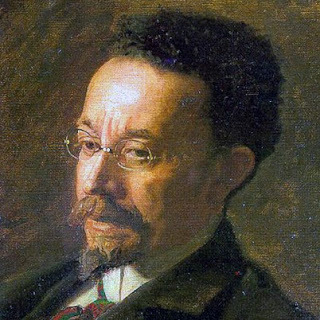 Thomas Eakins, Portrait of Henry O. Tanner 1900Ultimately, it was Henry Ossawa Tanner upon whom I focused. I researched the details of his life in order to create a plausible biography for Solomon Brokenberry, the fictional artist in my novel. Solomon Brokenberry is not meant to be a stand-in for Henry Ossawa Tanner. Rather, I relied upon the facts of Tanner's life to create what would seem real in a fictional character. Purely by coincidence, it turned out that the first
Thomas Eakins, Portrait of Henry O. Tanner 1900Ultimately, it was Henry Ossawa Tanner upon whom I focused. I researched the details of his life in order to create a plausible biography for Solomon Brokenberry, the fictional artist in my novel. Solomon Brokenberry is not meant to be a stand-in for Henry Ossawa Tanner. Rather, I relied upon the facts of Tanner's life to create what would seem real in a fictional character. Purely by coincidence, it turned out that the first
 View of the Seine, Looking Toward Notre Dame, 1896 major American exhibition of Tanner's work was being mounted around the time I was doing my research. As a result, there were new resources to consult. The exhibit opened in January, 2012 at the Pennsylvania Academy of the Fine Arts and traveled to the Cincinnati Art Museum and the Houston Museum of Fine Arts. (Here's a link.)
View of the Seine, Looking Toward Notre Dame, 1896 major American exhibition of Tanner's work was being mounted around the time I was doing my research. As a result, there were new resources to consult. The exhibit opened in January, 2012 at the Pennsylvania Academy of the Fine Arts and traveled to the Cincinnati Art Museum and the Houston Museum of Fine Arts. (Here's a link.)
I ordered a copy of the catalogue and pored over it.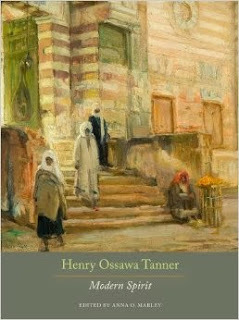 If you are interested in learning more about Tanner and his work, I cannot recommend this book highly enough. I included an Author's Note at the end of All That's Missing in which I told a little about Tanner's life and included a list of resources upon which I relied in creating my fictional artist. This book is included among those resources.
If you are interested in learning more about Tanner and his work, I cannot recommend this book highly enough. I included an Author's Note at the end of All That's Missing in which I told a little about Tanner's life and included a list of resources upon which I relied in creating my fictional artist. This book is included among those resources.
Tanner is the first African American artist whose work forms part of the White House art collection. His painting, "Sand Dunes at Sunset, Atlantic City", was purchased by the White House Foundation during the Clinton administration. Sand Dunes at Sunset, Atlantic City 1885Learn more about Tanner and the painting here. (http://www.whitehousehistory.org/whha...) There is an audio clip accompanying the photo of the painting. Please take the time to listen! According to several sources, Tanner's best-known work in the United States is "The Banjo Lesson," shown here.
Sand Dunes at Sunset, Atlantic City 1885Learn more about Tanner and the painting here. (http://www.whitehousehistory.org/whha...) There is an audio clip accompanying the photo of the painting. Please take the time to listen! According to several sources, Tanner's best-known work in the United States is "The Banjo Lesson," shown here.
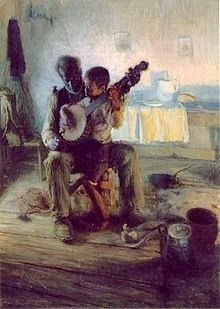 The Banjo Lesson 1893
The Banjo Lesson 1893
It was painted after Tanner returned to the United States from Paris around 1892. He had fallen ill and was forced to come home to recuperate.
As soon as his health was restored, Tanner auctioned as many of his painting as he could and returned to Paris. He received his first major recognition there when his painting "Daniel in the Lion's Den" received an Honorable Mention at the Salon in 1896.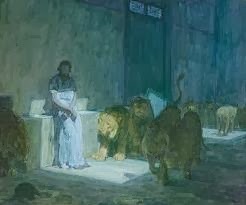 Daniel in the Lion's Den, 1896
Daniel in the Lion's Den, 1896
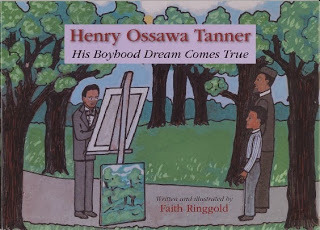
Faith Ringgold created a beautiful picture book to accompany the exhibit, HENRY OSSAWA TANNER: MODERN SPIRIT. It was published by the Pennsylvania Academy of the Fine Arts and provides an excellent introduction to Tanner and his work.
There are certain gifts which come with the hard work of writing. One of them is the reward of accomplishing a difficult task. Another is the gift of discovery that comes as a bit of serendipity along the way. Discovering the story of Henry Ossawa Tanner and his work was such a gift. If you do not know about him, here is a story you need to know.
One of the best parts of writing is doing research. When I wrote All That's Missing, I needed to create a character who was an African-American artist living sometime prior to 1950. I spent hours online and ordered used art history books and biographies. The artist's stories were fascinating. I loved looking at the work they created.
 Thomas Eakins, Portrait of Henry O. Tanner 1900Ultimately, it was Henry Ossawa Tanner upon whom I focused. I researched the details of his life in order to create a plausible biography for Solomon Brokenberry, the fictional artist in my novel. Solomon Brokenberry is not meant to be a stand-in for Henry Ossawa Tanner. Rather, I relied upon the facts of Tanner's life to create what would seem real in a fictional character. Purely by coincidence, it turned out that the first
Thomas Eakins, Portrait of Henry O. Tanner 1900Ultimately, it was Henry Ossawa Tanner upon whom I focused. I researched the details of his life in order to create a plausible biography for Solomon Brokenberry, the fictional artist in my novel. Solomon Brokenberry is not meant to be a stand-in for Henry Ossawa Tanner. Rather, I relied upon the facts of Tanner's life to create what would seem real in a fictional character. Purely by coincidence, it turned out that the first
 View of the Seine, Looking Toward Notre Dame, 1896 major American exhibition of Tanner's work was being mounted around the time I was doing my research. As a result, there were new resources to consult. The exhibit opened in January, 2012 at the Pennsylvania Academy of the Fine Arts and traveled to the Cincinnati Art Museum and the Houston Museum of Fine Arts. (Here's a link.)
View of the Seine, Looking Toward Notre Dame, 1896 major American exhibition of Tanner's work was being mounted around the time I was doing my research. As a result, there were new resources to consult. The exhibit opened in January, 2012 at the Pennsylvania Academy of the Fine Arts and traveled to the Cincinnati Art Museum and the Houston Museum of Fine Arts. (Here's a link.) I ordered a copy of the catalogue and pored over it.
 If you are interested in learning more about Tanner and his work, I cannot recommend this book highly enough. I included an Author's Note at the end of All That's Missing in which I told a little about Tanner's life and included a list of resources upon which I relied in creating my fictional artist. This book is included among those resources.
If you are interested in learning more about Tanner and his work, I cannot recommend this book highly enough. I included an Author's Note at the end of All That's Missing in which I told a little about Tanner's life and included a list of resources upon which I relied in creating my fictional artist. This book is included among those resources.Tanner is the first African American artist whose work forms part of the White House art collection. His painting, "Sand Dunes at Sunset, Atlantic City", was purchased by the White House Foundation during the Clinton administration.
 Sand Dunes at Sunset, Atlantic City 1885Learn more about Tanner and the painting here. (http://www.whitehousehistory.org/whha...) There is an audio clip accompanying the photo of the painting. Please take the time to listen! According to several sources, Tanner's best-known work in the United States is "The Banjo Lesson," shown here.
Sand Dunes at Sunset, Atlantic City 1885Learn more about Tanner and the painting here. (http://www.whitehousehistory.org/whha...) There is an audio clip accompanying the photo of the painting. Please take the time to listen! According to several sources, Tanner's best-known work in the United States is "The Banjo Lesson," shown here.
 The Banjo Lesson 1893
The Banjo Lesson 1893It was painted after Tanner returned to the United States from Paris around 1892. He had fallen ill and was forced to come home to recuperate.
As soon as his health was restored, Tanner auctioned as many of his painting as he could and returned to Paris. He received his first major recognition there when his painting "Daniel in the Lion's Den" received an Honorable Mention at the Salon in 1896.
 Daniel in the Lion's Den, 1896
Daniel in the Lion's Den, 1896
Faith Ringgold created a beautiful picture book to accompany the exhibit, HENRY OSSAWA TANNER: MODERN SPIRIT. It was published by the Pennsylvania Academy of the Fine Arts and provides an excellent introduction to Tanner and his work.
There are certain gifts which come with the hard work of writing. One of them is the reward of accomplishing a difficult task. Another is the gift of discovery that comes as a bit of serendipity along the way. Discovering the story of Henry Ossawa Tanner and his work was such a gift. If you do not know about him, here is a story you need to know.
Published on August 28, 2014 10:24
July 28, 2014
BOXES AND MORE BOXES
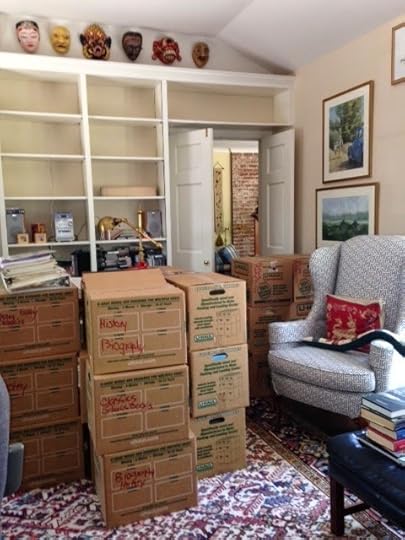 I've been silent for a long time and, if you ask why, I can tell you in a single word. PACKING.
I've been silent for a long time and, if you ask why, I can tell you in a single word. PACKING. Rick and I have lived in our home for 17 years, a record for both of us and we have the "stuff" to prove it. Now that we are moving, we are forced to confront those boxes we stuffed in the basement and the attic so many years ago, thinking we would get to them later, when we had more time. Does anybody ever have more time?
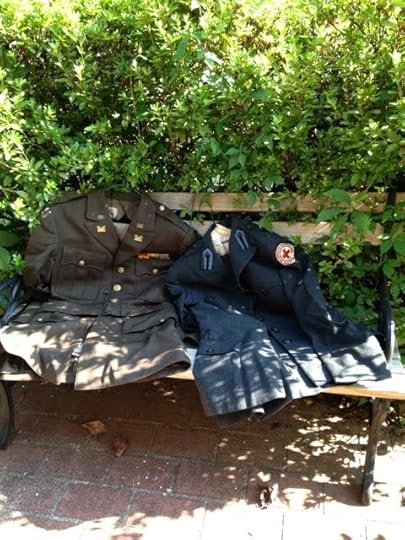 We have cleared the attic and disposed of as much junk as possible out of the basement. I have discovered treasures such as my father’s Army uniform and my mother’s Red Cross uniform. They met at Fort Bragg when my dad came home from World War II and were later married in the Chapel on post. They have both been gone for more than 15 years and it caused a tug at my heart to unearth these reminders.
We have cleared the attic and disposed of as much junk as possible out of the basement. I have discovered treasures such as my father’s Army uniform and my mother’s Red Cross uniform. They met at Fort Bragg when my dad came home from World War II and were later married in the Chapel on post. They have both been gone for more than 15 years and it caused a tug at my heart to unearth these reminders.I also found things I cannot believe have been saved for so long, including a letter to my grandfather from some public safety “official” in Florida reporting that the dog which had bitten him while he was on vacation had been released “in good health.” The letter was dated November of 1961. I have no idea why we saved it or what it was doing in my basement.
When I finished my last job for the school year, a day of Professional Development for teachers in Braxton County, WV, I decided I needed to set a goal for the summer, so the move did not completely consume my life. I vowed to write every day with the target of having a completed first draft of a new novel by the day we move. So far, I’ve managed to stay on schedule. Some days it’s pretty tense and there have been days when the final work for a given day was not completed until after midnight. But, having this daily "assignment" saves my sanity and keeps me engaged with my characters and their journey. I can tell you with complete honesty, that there have been days when escaping into the world of my novel has been a welcome refuge from the other work required on that day. Did I mention how many boxes of books I’ve packed?
I have reached the point where I celebrate the discovery of a box of something which has been rendered completely obsolete by the passage of time. Fifteen year-old highway maps, for example. Hooray! These require not one scintilla of thought or emotion. I can toss them (recycle, actually) with abandon. What a relief.
Most discoveries are far more complicated. This afternoon’s find, for example – a poem written by my cousin when she was in grade school. My aunt had apparently sent it to my father years ago and he had saved it in a special leather box he kept on his desk. This one’s a keeper. I'm going to send it to her today. It’s a lovely poem. I want to know when she wrote it.
Published on July 28, 2014 04:25
July 20, 2014
DIVERSITY IN ALL THAT'S MISSING
Like every writer, I am incredibly grateful for readers. There is no better feeling than when a writer reads a review of her work in which a reader points out exactly a detail or theme or circumstance that the writer was hoping to achieve. Of course, ultimately, the responsibility lies with the writer to create the world she envisions effectively enough for the reader to see it as the writer imagined it. Nevertheless, nothing feels better than positive confirmation that a reader "got" what you were trying to do.
When I wrote ALL THAT'S MISSING, one of my goals was for diversity to be a given in the lives of the protagonist and his contemporaries. This reader’s words from a Goodreads review give me permission to believe I may have succeeded.
“Read-alike to "Higher Power of Lucky" in that it's about a boy's search for a family as his sole-provider grandfather sinks into dementia. I liked that some characters were African-American, but it was such not a big deal that it took a while to figure out.” Thank you, dear reader!
When I wrote ALL THAT'S MISSING, one of my goals was for diversity to be a given in the lives of the protagonist and his contemporaries. This reader’s words from a Goodreads review give me permission to believe I may have succeeded.
“Read-alike to "Higher Power of Lucky" in that it's about a boy's search for a family as his sole-provider grandfather sinks into dementia. I liked that some characters were African-American, but it was such not a big deal that it took a while to figure out.” Thank you, dear reader!
Published on July 20, 2014 07:04
July 16, 2014
LETTER FROM A READER
Recently, I received an email from someone who had listened to the audiobook of All That’s Missing read by MacLeod Andrews.
“Your audio book was truly remarkable,” she wrote. “I could not wait to listen to the next part. I felt as if I were with Arlo every step of the way, and with his friends, and family members, Grandmother Ida and Poppo. I am going to recommend this book to my grand-daugther, age 9, because I think she'd love it too.”
As I face down another birthday later this month, I have to say that email was the nicest gift I could imagine. It’s true what they say about writers. You’re always wondering who is reading your work and hoping desperately that they enjoy it.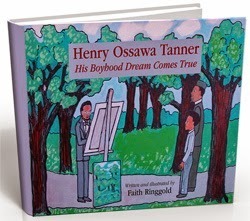
This listener also wrote, “What I particularly liked was your mentioning the work of the painter Henry Ossawa Tanner. I did a brief internet search on him, and was struck both by his courage and the luminosity of his painting.” I was struck by these things too and was only too happy to offer further reading selections in response to this reader’s request. In fact, it is my fervent wish that lots of people find out more about Henry Ossawa Tanner after reading All That’s Missing. That would be fabulous.
For young people, a good place to start might be Faith Ringgold’s picture book biography, Henry Ossawa Tanner: His Boyhood Dream Comes True, published by Bunker Hill in Pierpont, NH in 2011.
Then there is the beautiful book produced in conjunction with the 2012 exhibit, Henry Ossawa Tanner – Modern Spirit, published by the University of California Press.
Or, you can simply go to the website for the Pennsylvania Academy of the Fine Arts here.
Enjoy!
Sarah
“Your audio book was truly remarkable,” she wrote. “I could not wait to listen to the next part. I felt as if I were with Arlo every step of the way, and with his friends, and family members, Grandmother Ida and Poppo. I am going to recommend this book to my grand-daugther, age 9, because I think she'd love it too.”
As I face down another birthday later this month, I have to say that email was the nicest gift I could imagine. It’s true what they say about writers. You’re always wondering who is reading your work and hoping desperately that they enjoy it.

This listener also wrote, “What I particularly liked was your mentioning the work of the painter Henry Ossawa Tanner. I did a brief internet search on him, and was struck both by his courage and the luminosity of his painting.” I was struck by these things too and was only too happy to offer further reading selections in response to this reader’s request. In fact, it is my fervent wish that lots of people find out more about Henry Ossawa Tanner after reading All That’s Missing. That would be fabulous.
For young people, a good place to start might be Faith Ringgold’s picture book biography, Henry Ossawa Tanner: His Boyhood Dream Comes True, published by Bunker Hill in Pierpont, NH in 2011.
Then there is the beautiful book produced in conjunction with the 2012 exhibit, Henry Ossawa Tanner – Modern Spirit, published by the University of California Press.
Or, you can simply go to the website for the Pennsylvania Academy of the Fine Arts here.
Enjoy!
Sarah
Published on July 16, 2014 12:34
May 2, 2014
THE WRITING PROCESS BLOG TOUR
WRITING PROCESS BLOG TOUR
There’s a movement afoot in the writing community. It’s called the Writing Process Blog Tour and it’s an opportunity for writers to share their thoughts on the writing process. One writer answers four questions about her process and then tags two writer friends to answer the same four questions the following week. Bethany Hegedus tagged me and I’m grateful for the opportunity to pause and reflect. Sometimes you can learn a thing or two if you stop and think about what you’re doing.
Bethany and I were classmates in the Class of 2005 at Vermont College. I’m thrilled to see her amazing book GRANDFATHER GANDHI out in the world. It deserves every bit of buzz and praise it is receiving. She’s a wonderful editor and teacher, as well as a gifted writer, so it’s appropriate that I should be prompted to reflect on craft by her. If you would like to read Bethany’s answers to these questions, you can find them here .
And now, on with the tour . . . .
What am I currently working on?

I always have several projects going at once. It’s nice to have an alternate project to turn to when you get stuck. At the moment, I have a full draft of 2 realistic middle grade novels. They are in various stages of revision, but each time I go back to them, I recognize there are issues I have yet to resolve. (e.g., see above – “when you get stuck”) I also have the first 40 pages of a new middle grade novel which has elements of fantasy and magic. It’s where my heart is at the moment. I can’t say too much about it, because talking about a project takes all the energy out of it for me. I need to save every crumb of creative mojo for the work itself, at least in the early stages. After the fourth or fifth draft, I may be willing to share. For now, I look forward to settling into my favorite red chair and slowly pushing forward, one faltering step at a time.
How does my work differ from others of its genre?I suppose every writer hopes that she has a voice which distinguishes her work from that of other writers. People tell me that I tend to tell stories with a lot of heart. If my work has one characteristic, I would be happy for that to be what it is. I gravitate toward books with deeply flawed, but sympathetic characters, Richard Russo’s novels, for example. I love Sully in Nobody’s Fool . More recently, I loved the title character of Gabrielle Zevin’s latest novel, The Storied Life of A.J. Fikery .
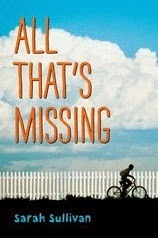
Place is also an important element of a story for me. I can’t write the book until I have a clear picture of details of the setting. I need to know about the way the air smells, what kind of trees are growing in people’s yards, what kind of birdsong they hear when they wake up in the morning. I need these things to help me find the right tone and rhythm. My latest book, for example, is set in a small town in the Tidewater area of Virginia. I like setting stories in small towns, perhaps because that is the sort of place I have lived most of my life. Every small town has its own unique “characters,” oddballs or eccentrics who are beloved and tolerated by their friends and neighbors alike. Those are the sorts of characters I like to discover inhabiting my novels and I enjoy meeting them in the works of other writers.
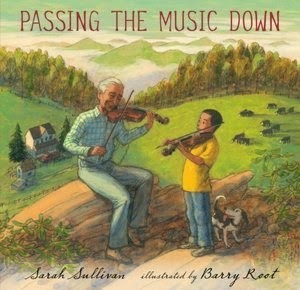 Sound and rhythm are important to me too. That’s why it was such a joy to write about two musicians as I did in
PassingThe Music Down
. I love it when the rhythm of the prose somehow matches the subject of the book. That opportunity doesn’t present itself very often, but when it does, it’s great fun to work toward something that organic.
Sound and rhythm are important to me too. That’s why it was such a joy to write about two musicians as I did in
PassingThe Music Down
. I love it when the rhythm of the prose somehow matches the subject of the book. That opportunity doesn’t present itself very often, but when it does, it’s great fun to work toward something that organic.Why do I write what I write?Usually, when I am asked this question, it is intended as a “polite” version of “when are you going to write for grown-ups?” With the exception of Passing The Music Down, which was based on two real musicians, my stories start with a fictional character whose voice comes into my head. At the beginning, I do more listening than writing. I try to find the dreamspace in my mind where the voice originates. Unfortunately, there are usually just enough snippets of conversation or interior monologue to ignite my curiosity. Nothing more. Then the work begins. I am compelled to search for the rest of the story. There are lots of false turns along the way. But, I don’t know how to avoid that.
I think those kinds of slender beginnings are really the nugget of emotional truth which is intended to be at the core of the book. I suppose if you want to consider the psychology of this, it probably springs from something in my own life that I am wrestling with. One of my advisors at Vermont College, Jane Resh Thomas, famously said that writers are always “writing behind their backs,” meaning that, if you look beneath the surface of the story you’re working on, you will discover that you are secretly struggling with some issue from your own life. We tell stories in order to make sense out of life. It’s as simple as that. The odd thing is, we may not be aware that we're doing it.
Even if the story you’re writing seems to be about someone else’s problem, your protagonist is probably struggling with an emotional issue that is deeply concerning to you as well. If I am faithful to my initial nugget of truth, I am likely to discover a good story. If I try to force a plot on that initial vulnerable voice, the story probably won’t work.
That’s about as much as I understand about the process. There is a fair amount of mystery to it and I’m happy to “let the mystery be,” as Iris DeMent sings.
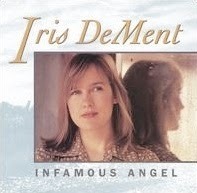
I believe stories are a gift from the universe. They enable us to process tragedy and misfortune. They help us stay connected to the rest of humanity, even when our personal histories might cause us to feel we do not belong. Without them, we become less human.
How does my individual writing process work?
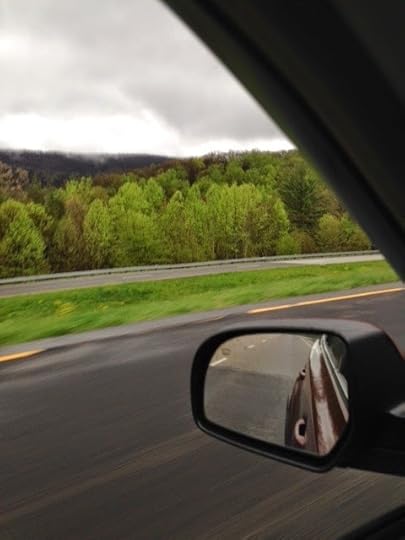 To be honest, I don’t fully understand it myself, except that it works best when there is not too much going on in my life. I need lots of time to daydream, to let my mind drift and mull over connections between things. It’s been difficult lately because my husband and I are moving from West Virginia to Virginia. It’s much better if I can write at least a little bit every day. My mind can stay rooted in the world of my story. As it is, I try to make use of my time on the road by mulling over story ideas and figuring out what my characters really want.
To be honest, I don’t fully understand it myself, except that it works best when there is not too much going on in my life. I need lots of time to daydream, to let my mind drift and mull over connections between things. It’s been difficult lately because my husband and I are moving from West Virginia to Virginia. It’s much better if I can write at least a little bit every day. My mind can stay rooted in the world of my story. As it is, I try to make use of my time on the road by mulling over story ideas and figuring out what my characters really want.With middle grade fiction, I normally have the beginning of a story. There’s a character and I know exactly what’s happening to him or her for about 30 pages. Then the well runs dry for a while. I can imagine the next scene, but it often feels forced. I have to keep sitting down at the computer and trying, until finally the creative side of my brain becomes unjammed and the story picks up where I left off. The middle is the hardest part for me. By the time I get there, I usually know how the book will end and it’s a relief to work on the final third of the book. As may be obvious from what I’ve described, plot is the hardest part for me. I really struggle with it.
I’ve tagged Madelyn Rosenberg and Kelly Bennett to follow me on this Writing Process Blog Tour.
 A former newspaper reporter, Madelyn Rosenberg is a now a freelance writer in Arlington, Va. Her books for children include Canary in the Coal Mine, Happy Birthday, Tree and The Schmutzy Family. along with Dream Boy (coauthored by Mary Crocket, July 2014), How to Behave at a Tea Party (September 2014) and Nanny X (October 2014). She coaches rec soccer and serves as advisor for an elementary school newspaper. She has learned on school visits that if a kindergartener is waving her hand wildly, it may mean she has a question, but more likely it means she has to go to the bathroom. Read more about her at www.madelynrosenberg.com
A former newspaper reporter, Madelyn Rosenberg is a now a freelance writer in Arlington, Va. Her books for children include Canary in the Coal Mine, Happy Birthday, Tree and The Schmutzy Family. along with Dream Boy (coauthored by Mary Crocket, July 2014), How to Behave at a Tea Party (September 2014) and Nanny X (October 2014). She coaches rec soccer and serves as advisor for an elementary school newspaper. She has learned on school visits that if a kindergartener is waving her hand wildly, it may mean she has a question, but more likely it means she has to go to the bathroom. Read more about her at www.madelynrosenberg.com Kelly Bennett is an award winning author of books for children—mostly picture books. Her stories, recently Vampire Baby (Candlewick Press, 2013), Not Norman: A Goldfish Story, One Day I Went Rambling, Dad and Pop, Your Daddy Was Just Like You and Your Mommy Was Just Like You, and Dance, Y’all, Dance celebrate imagination, families, friends, pets… all that goes into being a kid! Visit her at www.kellybennett.com. Watch the VAMPIRE BABY Book Trailer here!
Kelly Bennett is an award winning author of books for children—mostly picture books. Her stories, recently Vampire Baby (Candlewick Press, 2013), Not Norman: A Goldfish Story, One Day I Went Rambling, Dad and Pop, Your Daddy Was Just Like You and Your Mommy Was Just Like You, and Dance, Y’all, Dance celebrate imagination, families, friends, pets… all that goes into being a kid! Visit her at www.kellybennett.com. Watch the VAMPIRE BABY Book Trailer here!
Published on May 02, 2014 07:34



